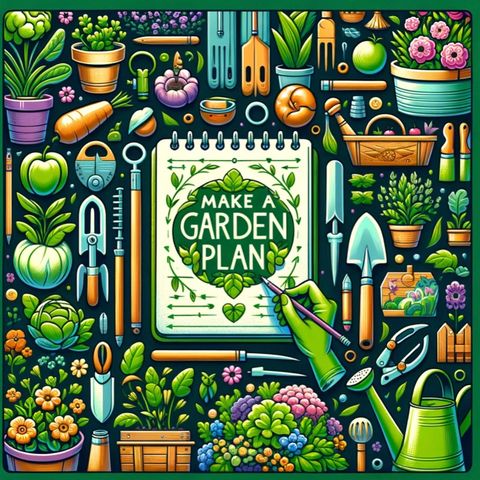"Plan Your 2024 Allotment Garden: Step-by-Step Guide" | Gardening Tips & Allotment Advice Podcast

Scarica e ascolta ovunque
Scarica i tuoi episodi preferiti e goditi l'ascolto, ovunque tu sia! Iscriviti o accedi ora per ascoltare offline.
"Plan Your 2024 Allotment Garden: Step-by-Step Guide" | Gardening Tips & Allotment Advice Podcast
Questa è una trascrizione generata automaticamente. Si prega di notare che non è garantita la completa accuratezza.
Descrizione
Welcome to "Plan Your 2024 Allotment Garden: Step-by-Step Guide," your comprehensive resource for designing a productive and beautiful allotment garden for the upcoming year. Whether you're a seasoned gardener or...
mostra di piùWhy Planning Your Allotment Garden is Essential
Planning your allotment garden is essential for maximizing space, optimizing plant health, and ensuring a bountiful harvest. A well-thought-out plan helps you avoid common pitfalls such as overcrowding, nutrient depletion, and pest infestations. Taking the time to map out your garden now will save you time and effort later, making your gardening experience more enjoyable and rewarding.
Assessing Your Garden Space
Before you start planning, it’s important to assess your garden space. Here’s how to get started:
**1. Measure Your Plot:** Knowing the exact dimensions of your allotment is the first step. Measure the length and width of your plot and create a scaled map.
**2. Observe Sunlight Patterns:** Pay attention to how sunlight moves across your garden throughout the day. This will help you place sun-loving plants in the best spots and shade-tolerant plants in less sunny areas.
**3. Evaluate Soil Quality:** Test your soil’s pH and nutrient levels. Knowing your soil type will help you select the right plants and necessary soil amendments to improve fertility and structure.
Designing Your Garden Layout
A well-designed garden layout can make a significant difference in your garden’s productivity and ease of maintenance. Consider the following:
**1. Crop Rotation:** Rotate your crops each year to prevent soil depletion and reduce the risk of pests and diseases. Group plants with similar nutrient needs and growth habits together for easier rotation.
**2. Companion Planting:** Use companion planting techniques to enhance plant growth, deter pests, and improve yields. For example, plant basil near tomatoes to repel insects, or grow marigolds to ward off nematodes.
**3. Accessibility:** Design your garden with accessibility in mind. Create wide paths for easy movement and ensure that all plants are within reach for watering, weeding, and harvesting.
**4. Raised Beds and Containers:** Consider using raised beds and containers to improve drainage, reduce soil compaction, and make gardening more ergonomic.
Choosing the Right Plants
Selecting the right plants for your allotment is crucial for a successful garden. Here’s how to make informed choices:
**1. Climate Compatibility:** Choose plants that are well-suited to your local climate and growing season. Check the hardiness zones and select varieties that thrive in your region.
**2. Successive Planting:** Plan for successive planting to ensure a continuous harvest throughout the growing season. This involves planting new crops as soon as one harvest is finished.
**3. Seed Starting:** Start seeds indoors for plants that need a longer growing season. This gives you a head start and ensures strong, healthy seedlings ready for transplanting.
Implementing Your Plan
Once your plan is in place, it’s time to implement it. Here’s how:
**1. Prepare the Soil:** Amend your soil with compost or organic matter to enhance fertility and structure. Ensure your soil is well-drained and free of weeds.
**2. Planting:** Follow your garden plan to plant seeds and seedlings at the right spacing and depth. Water thoroughly after planting to help them establish.
**3. Maintenance:** Regularly water, weed, and monitor your plants for pests and diseases. Adjust your plan as needed based on plant performance and weather conditions.
Listener Questions and Success Stories
We love engaging with our listeners! In this episode, we’ll feature your questions about allotment garden planning and share success stories from fellow gardeners. Learn from their experiences and get practical advice tailored to your gardening challenges.
Conclusion
"Plan Your 2024 Allotment Garden: Step-by-Step Guide" equips you with all the tools and knowledge you need to design a productive and beautiful garden. With expert tips, practical advice, and inspiring stories, this episode will help you make the most of your gardening space. Tune in, subscribe, and join us as we embark on the journey to successful allotment gardening in 2024. Happy gardening!
Informazioni
Copyright 2024 - Spreaker Inc. an iHeartMedia Company
